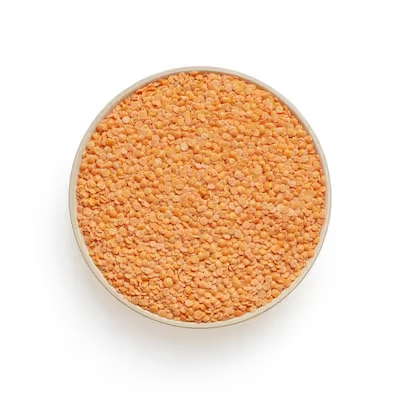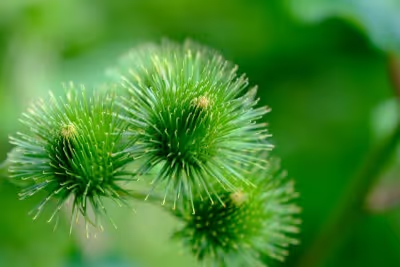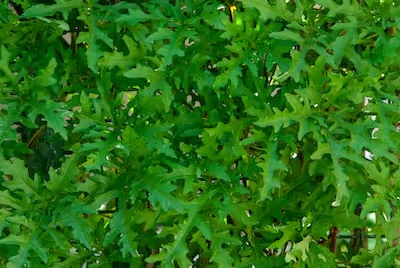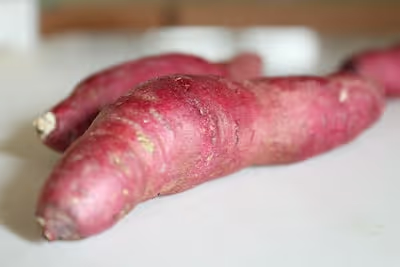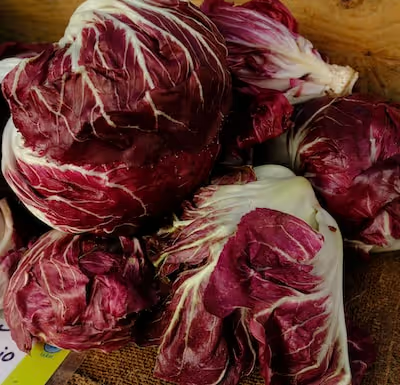Growing Lavender: How to Cultivate Healthy, Fragrant Blooms

Growing Lavender
Growing lavender transforms any ordinary garden into a fragrant, soothing oasis. To thrive, lavender demands plenty of sun, lean and well-drained soil, and minimal fuss with watering. Ready to sharpen those pruning shears and start growing lavender like a pro? Here's how to plant, care for, and harvest lavender that perfumes your space and earns the envy of neighborhood gardeners.
Cheatsheet: Lavender Mastery in Minutes
🌞 Site & Soil Prep
- Pick full-sun spots—6+ hours/day
- Use well-drained, loose soil; pH 6.5–7.5
- Improve clay soil with sand or grit
🌱 Planting Steps
- Plant in spring, after last frost (50°F/10°C soil)
- Space plants 18–24 in. (45–60 cm) apart
- Set crowns 1 in. (2.5 cm) above soil
- Water lightly until established
🛠️ Tools and Products You'll Need
- Lavender starts or seeds
- Trowel
- Bypass pruners
- Soil pH tester
- Sharp sand or gravel
- Mulch (gravel, not bark)
💧 Watering & Feeding
- Water once weekly in year 1; drought-tolerant after
- No fertilizer; rich soil = fewer blooms
✂️ Pruning & Harvesting
- Prune by 1/3 in spring to boost blooms
- Harvest when buds show color, before fully open
- Hang to dry in bundles
🌬️ Health & Fragrance Stats
- 1 plant perfumes 10 ft² (1 m²)
- Lavender oil calms, supports sleep, eases stress
🛡️ Trouble-Free Tips
- Resists deer, rabbits, most pests
- Prevent root rot: avoid overwatering, soggy soil
- Replace plants every 5–7 years for strongest bloom
-
Growing Lavender: How to Cultivate Healthy, Fragrant Blooms
I learned the hard way that lavender hates wet feet, after an entire hedge composted itself during a rainy spring in Zone 7. The survivors taught me discipline: sun, sharp drainage, lean soil, and a knife-sharp prune.
Choose the right lavender for your site
Lavandula angustifolia is the classic “English lavender” with sweet perfume and cold tolerance to USDA Zone 5. I favor ‘Hidcote’ for color saturation and ‘Munstead’ for tidy form.
Lavandula x intermedia or lavandin grows larger, throws longer stems, and yields more oil. ‘Grosso’, ‘Super’, and ‘Provence’ carry fields in commercial plantings and handle heat well in Zones 6 to 9.
Lavandula stoechas flashes those rabbit-ear bracts and loves heat. Keep it in Zones 8 to 10 or containers you can haul indoors.
Lavandula dentata thrives in mild winters and maritime air. Gorgeous hedge in Zone 9 to 11 patios, sulky in freezing winds.
Sun and airflow
Full sun means 8 hours minimum. Skimp on light and you get lank, floppy stems and thin scent.
Space plants 24 to 36 inches for angustifolia and 36 to 60 inches for lavandin. Airflow prevents fungus in humid summers.
Soil: make it quick-draining and slightly alkaline
Growing Lavender goes from fussy to foolproof with drainage. I mix 40 percent coarse sand or 3 to 6 mm grit into native soil and raise the bed 6 inches, 15 cm.
Aim for soil pH 6.5 to 8. If you’re acidic, scratch in garden lime and retest after 6 weeks.
“Lavender thrives in poor, alkaline, free-draining soil and full sun.” Royal Horticultural Society, 2023.
Skip peat-heavy mixes that sponge water. A lean blend of 1 part loam, 1 part crushed lava or grit, 1 part composted bark has served me well.
Containers that behave like hillsides
Use a pot that is 12 to 16 inches wide, 30 to 40 cm, with big drainage holes. Terracotta breathes and keeps crowns dry.
Blend 50 percent high-quality potting mix with 30 percent pumice or perlite and 20 percent coarse sand. Topdress with 1 inch, 2.5 cm, of gravel to keep the base dry.
Watering: deep, infrequent, disciplined
First year, water once or twice weekly until roots set, then taper. After establishment, I water every 10 to 21 days in summer depending on heat and soil, always letting the top 2 inches, 5 cm, dry first.
“Overwatering is the most common cause of decline in lavender.” Oregon State University Extension, 2018.
Morning irrigation dries foliage by noon. Drip lines with 0.5 gph emitters keep crowns dry and roots happy.
Feeding: less is more
Lavender blooms best on a lean diet. A light sprinkle of low-nitrogen organic fertilizer in early spring is plenty, around 2-1-3 or close.
Too much nitrogen triggers lush growth that snaps in wind and rots in rain. Save the compost feast for tomatoes.
Pruning for longevity and bloom
Prune twice in many climates. In spring, trim to a neat dome, removing about one third of new growth, and never cut below green buds into old wood.
After first flush, shear spent wands back to the top of the mound. Plants that get a tidy summer haircut push a tighter second bloom.
“Prune annually to maintain a mounded shape and prevent woody centers.” Royal Horticultural Society, 2023.
Planting technique I trust
Set crowns slightly high, 0.5 inch, 1.2 cm, above grade to shed water. Backfill with gritty mix and tamp gently to remove air pockets.
Water in once, then leave it alone for a few days. I gravel mulch the dripline and keep organic mulch far from the base.
Propagation that actually works
Softwood cuttings in late spring root fast. Take 3 to 4 inch, 7 to 10 cm, shoots, strip the lower leaves, wound the base lightly, and stick into a 50:50 perlite and peat-free mix.
Semi-hardwood cuttings in midsummer are reliable too. Mist lightly, keep at 68 to 72 F, 20 to 22 C, and you’ll see roots in 2 to 4 weeks.
Seeds germinate slowly and lean toward variability. If you crave a uniform hedge, go cuttings or buy clones.
Winter survival
In Zones 5 and 6, plant in spring for a full root season. In fall, stop feeding, avoid late heavy pruning, and mound grit around the crown to shed meltwater.
In snow country, the killer is ice and soggy thaws. A simple A-frame of stakes and a clear cover deflects slush without smothering airflow.
Humidity hacks
In sticky summers, give extra spacing and prune tighter. Gravel mulch outperforms bark by keeping bases dry and reflecting light.
Morning sun on dewy leaves dries spores before they bite. If disease shows, remove debris fast and clean tools with 70 percent alcohol.
Harvest for fragrance, flavor, or oil
For bundles, cut when 20 to 30 percent of florets open. For culinary buds, cut just before opening for clean flavor.
For oil, let 40 to 50 percent open on lavandin and slightly earlier on angustifolia. Harvest cool mornings and distill or dry same day.
“Lavandin often yields about 1 to 1.5 percent essential oil by weight, while angustifolia averages 0.5 to 1 percent.” Oregon State University Extension, 2017.
Integrated pest and disease notes
Spittlebugs look messy but rarely harm plants. A quick finger swipe or hose jet clears them.
Root rots like Phytophthora take hold in heavy, wet soils. Fix drainage first, then consider raised beds.
In regions with Xylella quarantines, source plants from inspected growers. Healthy stock saves seasons of grief.
Companion plants that share the vibe
Rosemary, thyme, oregano, and sage want the same dryness and sun. Silver artemisia and santolina add texture and do not crowd the crown.
Pollinators mob mixed drifts. I stagger bloom times with salvias and agastache to feed bees from spring to fall.
My field checklist for Growing Lavender
- Sun: 8 hours minimum, south or west exposure wins.
- Drainage: raised beds or mounds, gravel mulch, no soggy feet.
- Soil pH: 6.5 to 8, add lime if your soil runs sour.
- Water: deep, infrequent; keep crowns dry.
- Prune: spring shape, post-bloom shear; avoid cutting into old wood.
- Spacing: 24 to 60 inches depending on species.
- Planting: crown slightly high, gritty backfill.
Best cultivars by purpose
- Hedges in cold climates: ‘Hidcote’, ‘Munstead’, ‘Folgate’.
- Long stems for bouquets: ‘Grosso’, ‘Super’, ‘Provence’.
- Heat and humidity tolerance: ‘Phenomenal’ and ‘Sensational’ have held form for me in muggy summers.
- Containers and small spaces: ‘Little Lady’, ‘Thumbelina Leigh’.
- Culinary buds: ‘Royal Velvet’, ‘Melissa’ for softer flavor.
Buying plants and gear that save time
- Plant material: choose named cultivars from certified nurseries to avoid off-types.
- Soil test kit or digital pH meter: look for probes that read in the 6 to 8 range with calibration solution included.
- Grit by the bag: crushed granite or pumice in 3 to 6 mm size blends cleanly into beds.
- Drip kit: 0.5 gph emitters and a simple timer keep watering consistent.
- Bypass pruners and a lightweight shearing knife: clean cuts, fast shaping.
- Drying racks or screens: good airflow, shaded spot, 5 to 7 days to papery dry.
- Essential oil stills: stainless units with a proper condenser if you plan to distill; start small and scale once you know your yields.
Indoor and grow-light trials
Growing Lavender indoors is a high-wire act. If you try, give 14 to 16 hours of high output LED light around 400 to 600 μmol m−2 s−1 PPFD and a fan on low.
Use a gritty mix, water sparingly, and rotate pots weekly. Windows alone rarely deliver enough photons in winter above 40 degrees latitude.
Numbers that keep me honest
“Lavender needs at least 6 to 8 hours of direct sun and excellent drainage.” Colorado State University Extension, 2020.
“Plant crowns slightly above soil level and avoid heavy mulches around stems.” University of California Master Gardeners, 2021.
Common fixes for common fails
- Leggy plants: increase sun, prune tighter in spring, avoid nitrogen.
- Blackened base or sudden wilt: improve drainage, raise the bed, reduce watering.
- Few blooms: check pH, cut back fertilizer, prune after first flush to trigger new spikes.
- Winter dieback: plant earlier in the year, gravel mulch, windbreaks, no late heavy pruning.
Anecdotes from the rows
I once replaced bark mulch with 1 inch, 2.5 cm, of pea gravel across a 60-foot hedge and bloom doubled the next season. The bees agreed with the decision before I did.
On harvest mornings I carry a bucket, a bread knife, and a thermos. If I can smell the plants before I see them, it is time to cut.
Frequently Asked Questions About Growing Lavender
What is the ideal soil condition for lavender plants?
Lavender thrives in well-draining, sandy or loamy soils with a neutral to slightly alkaline pH between 6.5 and 7.5. Avoid planting in overly fertile or waterlogged soils to prevent root rot.
How much sunlight does lavender require daily?
These sun-loving plants require a minimum of 6 to 8 hours of direct sunlight daily to bloom abundantly and maintain vibrant growth.
How often and how much should lavender be watered?
Establish young lavender plants by watering weekly during their first growing season. Mature lavender is drought-tolerant and prefers infrequent watering; typically once every two to three weeks during prolonged dry periods. Ensure soil dries out completely between watering sessions.
When and how should lavender be pruned?
Prune lavender annually in early spring or after flowering in late summer to maintain shape and encourage fresh growth. Remove around one-third of the plant’s foliage, cutting above the woody stems to stimulate vigorous blooming.
What are common pests and diseases affecting lavender?
Lavender typically resists most pests and diseases, but occasionally experiences issues with aphids, whiteflies, or fungal diseases like root rot. To minimize these problems, provide ample airflow, avoid overwatering, and remove any infected plant material promptly.
Can lavender withstand cold temperatures?
Cold hardiness varies among lavender varieties. English Lavenders (Lavandula angustifolia) comfortably withstand winter temperatures down to -20°F (-29°C), whereas other varieties, such as French Lavender (Lavandula dentata), prefer milder climates and may not survive below 20°F (-7°C). Consider local climate conditions when selecting a lavender variety.
When is the best time to harvest lavender?
Harvest lavender blooms early in the morning after dew has dried, just before the flowers fully open. This timing preserves the fragrance and maximizes the essential oils within the blossoms.
Growing Lavender rewards those who respect its quirks: free-draining soil, loads of sun, and a light hand with water. Prune with intent, and you’ll get lush, fragrant blooms that don’t quit. Skip the fuss—lavender thrives on a little neglect. Pair it with other resilient herbs like thyme or sage for a patch that smells like Provence and looks sharp year-round. Keep your soil lean, keep your shears handy, and let the sun do the rest. With these basics dialed in, your lavender will turn any corner into an aromatic retreat. Sometimes, less really is more.
The Homesteader's Take on Lavender: Practical Uses for Self-Sufficient Living
Medicinal and Wellness Applications
- Natural Sleep Aid: Fill small fabric sachets with dried blooms for calming bedside aromatherapy.
- Healing Salve: Infuse dried lavender buds in coconut oil; blend with beeswax for soothing minor burns or skin irritations.
- Herbal Compress: Steep lavender flowers in hot water; soak cloth and use as warm compress to ease tension headaches.
Lavender in the Homestead Pantry
- Culinary Seasoning: Use dried buds sparingly to flavor honey, shortbread, marinades, or herbal syrups.
- Preservation Helper: Lavender's antimicrobial properties may aid preserves; add a tiny amount to homemade jams and jellies.
- Homemade Tea Blends: Mix lavender with chamomile or mint for stress-relieving herbal teas.
Lavender for Pest Control and Household Uses
- Moth Repellent: Place dried blossoms or lavender sachets in closets to deter moth activity naturally.
- Cleaning Agent: Distill lavender-infused vinegar for a scented, non-toxic household cleaner.
- Garden Companion: Plant lavender near vegetables like cabbage or broccoli to help deter pests and attract beneficial pollinators.
Livestock and Lavender
- Calming Effect: Hang lavender bundles near chicken coops or livestock areas to reduce animal stress and anxiety.
- Bedding Enhancement: Mix dried lavender stalks into animal bedding to control odors and insects naturally.
Find out which plants will thrive in your garden!
Answer a few fun questions and get custom plant recommendations perfect for your space. Let’s grow something amazing together!

start your season

